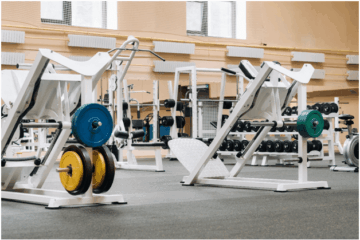The initial and fundamental step in maintaining fitness equipment is to conduct regular and meticulous inspections of all its components. This is not only a preventive measure but also crucial for ensuring the safety and optimal functionality of the equipment.
The first step in maintaining fitness equipment is to regularly check the various parts of the equipment. First, check whether the connectors such as screws and nuts are loose, especially for strength training equipment. The looseness of these parts may cause accidents during use, so they must be tightened in time. Secondly, check the transmission parts, such as the belt of the treadmill and the chain of the spinning bike, to ensure that they can operate normally. If the belt is found to be worn, loose or broken, or the chain is rusty, stuck, etc., it should be replaced or repaired in time. In addition, according to the instruction manual of the equipment, lubricating oil should be added to each mechanical part regularly to ensure that they can run smoothly and reduce wear and noise.

In terms of cleaning, fitness equipment of different materials requires different cleaning methods. For metal parts, such as dumbbells, barbells, and equipment frames, use a mild detergent and a soft damp cloth to wipe to remove sweat and stains on the surface. When choosing a detergent, avoid using detergents containing alcohol or strong acids and alkalis, as these detergents may damage the coating on the metal surface and cause rust or corrosion. For rubber parts, such as yoga mats, fitness balls, and non-slip mats, use warm water and a neutral detergent mixed together and gently wipe with a damp cloth. After wiping, wipe with a dry cloth in time to prevent the rubber from aging or breeding bacteria due to long-term moisture. For electronic components such as the control panel and display of aerobic equipment, be especially careful when cleaning. When cleaning, use a slightly damp soft cloth to wipe gently to prevent moisture from entering the electronic components and causing short circuits or damage. If you encounter stubborn stains, use a special electronic equipment cleaner for cleaning, but be careful to follow the instructions for use of the cleaner.
In addition to regular maintenance and cleaning, pay attention to the use environment of fitness equipment. Try to avoid placing the equipment in places with humidity, high temperature or direct sunlight, as these environmental factors may accelerate the aging and damage of the equipment. At the same time, educate users to use the equipment correctly to avoid damage to the equipment due to improper use. For example, when using strength training equipment, do not exceed the maximum load-bearing range of the equipment; when using aerobic equipment, do not frequently switch the power on and off or perform violent operations.

Simultaneously, educating equipment users about proper usage is of great significance. For strength training equipment, users should be aware of the maximum load – bearing capacity of the equipment and never exceed it. Overloading can cause structural damage to the equipment, such as bending of the frames or breakage of the joints. When using aerobic equipment, frequent power – on and off cycling should be avoided. Each time the equipment is powered on, there is a surge of electrical current, and repeated surges can damage the internal electrical components. Violent operations, such as sudden and forceful starts or stops, can also put excessive stress on the mechanical and electrical parts of the equipment, leading to premature wear and failure. By following these maintenance and usage guidelines, fitness equipment can have a longer lifespan and provide a safe and efficient workout experience for users.


